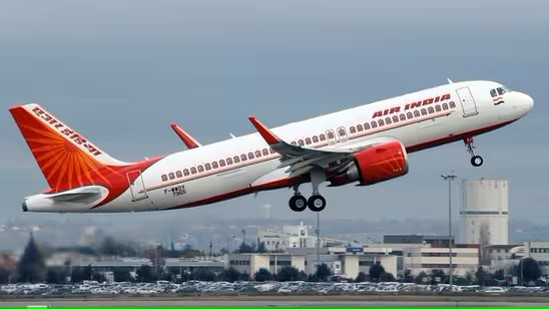Two Air India aircraft flew over Iranian airspace shortly before Israel’s attack, as confirmed by a spokesman who stated that there were no flight restrictions or alerts from aviation authorities. However, Air India rerouted flights over the weekend as a precautionary measure.
 In New Delhi, just hours before Iran’s significant aerial assault on Israel, at least two Air India planes traversed airspace under Iranian control, potentially endangering the lives of numerous passengers and crew.
In New Delhi, just hours before Iran’s significant aerial assault on Israel, at least two Air India planes traversed airspace under Iranian control, potentially endangering the lives of numerous passengers and crew.
Flight data from Flightradar24, a flight tracking website, revealed that Air India flights 116 and 131, travelling from New York to Mumbai and from Mumbai to London respectively, flew over the Persian Gulf and Gulf of Oman on April 13 and April 14. This occurred amidst escalating tensions between Iran and Israel, with Iran’s attack on Israel occurring over the weekend, involving the launch of over 300 drones and missiles.
The two Air India planes involved were a Boeing 777-232 and a Boeing 777ER, with passenger capacities of approximately 280 and 330 respectively.
Air India emphasised its commitment to passenger safety, stating that regardless of airspace conditions, their flight operations are rigorously risk-assessed with no compromise on safety. The airline closely monitored the situation in the Middle East and opted to reroute some west-bound flights along safer corridors in consultation with safety organisations and regulatory bodies.
Despite Air India’s rerouting measures, other airlines such as Malaysia Airlines, Emirates, and Qatar Airways also flew over Iranian airspace on April 13. Global airlines began adjusting flight routes or cancelling flights over the weekend and into Monday (April 15) due to escalating tensions.
As a precautionary measure, Air India rerouted some flights on April 13, including flights 149 and 121 from Kochi to London Gatwick and Delhi to Frankfurt, which took longer routes via Afghanistan.
The decision-making process behind rerouting specific flights while others continued over Iranian airspace remains unclear.
The history of civilian aircraft incidents in or near warzones, such as the downing of a Ukrainian plane in Iran in January 2020 and a Malaysia Airlines plane over eastern Ukraine in July 2014, underscores the importance of prioritising passenger safety in flight operations, even when flying over potentially volatile regions.




